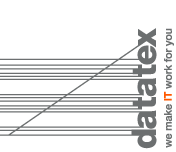
Artificial Intelligence for Market Forecasting in the Textile Sector
Interview with Bjol R. Frenkenberger (Ceo MIR Insight)

MIR INSIGHT – A Norwegian company based in Oslo, MIR Insight specialises in Artificial Intelligence solutions for forecasting price and sales trends, market developments and supply chain and logistics control.
MIR Insight is a partner of Datatex, and with Datatex – a leading company in ERP solutions for the textile industry – it works with companies in the textile and clothing industry.
Historically, entrepreneurs have relied heavily on their experience and intuition to make forecasts about sales, product price changes and demand trends in their target market. Today, advanced Artificial Intelligence solutions are available that provide decisive help to the entrepreneur because they are able to quickly analyse an impressive amount of data, providing fundamental insights into how the market will evolve. From this point of view, how is the situation changing in the textile world, and what does MIR Insight propose for companies in the sector?
One of the critical issues in the industry is the limited exchange of information across the supply chain, typically confined to direct customers and suppliers. This makes it very difficult to forecast market tipping points leading to millions in losses, missed sales opportunities, and overproduction. When forecasting market tipping points, MIR Insight has been in up to 99% of predictions correct when we indicate a market up or downturn. This is why textile market leaders such as Maral Overseas Ltd. already use our technology.
The textile industry has faced significant challenges over the past three years, with market volatility leading to substantial losses—estimated at 4-6% of total revenue for leading companies. These losses have largely been due to difficulties in predicting and quickly adapting to market changes.
However, the landscape is changing with the introduction of advanced machine learning technologies and the vast, previously untapped pools of market data. These innovations empower companies to better anticipate fluctuations in orders and market trends that were previously beyond their scope of understanding.
How do you choose which data to analyse? What criteria do you use to understand whether the data is meaningful and reliable?
Our approach begins by asking a crucial question: “What factors outside your company directly impact your orders or prices as a textile company?” We answer this question through a purely data-driven process. We source and clean data from dozens of sources and then utilize specially developed algorithms and search engines. These search engines work their way through billions of market data, ranging from import/export data to chemical prices or climate data to identify key influence factors.
We then use such influence factors directly to forecast, but can also review and discuss them with you and your team when it concerns your products in particular. Based on your input, we can fine-tune the selection, focusing more on certain factors—such as exclusively analysing data from the U.S. market or including additional information on yarn imports. The aim of this collaborative process is to develop a shared understanding between our team and yours, ensuring that the data we use is both relevant and actionable.
Which forecasts are the most difficult, the most complex? And to what extent – concretely – do predictions made by artificial intelligence reduce the margin of error?
Forecasting rapidly changing variables is inherently challenging, especially when it comes to orders, which can be even more difficult if reliable customer forecasts are scarce. We’ve found that our AI excels particularly in scenarios involving highly unpredictable elements—such as fashion industry orders or fluctuations in cotton prices. This is because our AI can analyze and integrate a far greater number of factors in real-time than a human could, giving it a distinct advantage in actually identifying market tipping points. All other forecasting methods only rely on limited historical data!
MIR Insight is a partner of Datatex. What is the value of this partnership and what opportunities can it open up for companies in the textile sector?
Together, Datatex and MIR share the vision of a connected supply-chain enabled by cutting-edge technology so that our customers can minimize losses and reduce waste.
Our advanced forecasting logic enables Datatex users to access advanced functionalities in areas such as probabilistic inventory management and purchasing. We see immense customer value, which we can unlock together, by providing the most accurate and actionable forecasts available for the textile industry.

